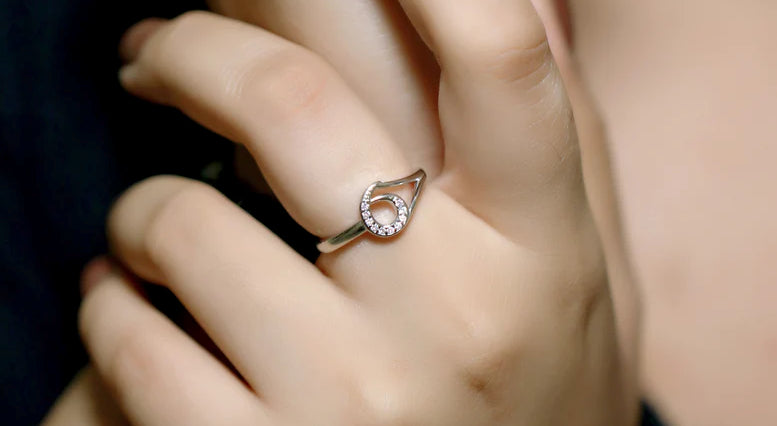Gold or Silver? What’s Better for You?
Posted by ZARKAN JEWELLERY

Silver and gold are both precious metals with a range of properties that make them desirable in certain contexts. Silver is more abundant and thus generally less costly, but gold has a higher value and is the preferred choice for jewellery and high-end applications. Silver is more malleable and malleability is important in jewellery and other ornamental items. Gold also tends to be more resistant to tarnishing, making it a popular choice for long-term storage. Both metals are popular in industrial applications, with silver being turned into copper alloys for electrical contacts and gold being used for plating and corrosion-resistant coatings. Ultimately, the choice between silver and gold should be based on the needs of the application and the desired aesthetic.
When is Silver Better Than Gold?
- Silver is usually more affordable than gold, making it easier to invest in. Silver is typically seen as a better option for small retail investors who don't have the financial means to invest in gold, as it is more accessible and less expensive per ounce.
- Silver is more reflective and often has a brighter shine than gold. Silver has a higher reflective index than gold, meaning that it is more capable of reflecting light and often gives off a brighter shine. This makes it an ideal choice for applications such as jewellery, lighting fixtures, and solar reflectors. Silver is also able to absorb a greater amount of light than gold, which helps it to achieve a warm and inviting appearance. Additionally, the higher reflective index of silver makes it ideal for use in a variety of optical instruments, such as microscopes, telescopes, and binoculars. As a result, silver is an essential component in many of these types of devices, allowing users to view objects with greater clarity and detail.
- Silver is a better conductor of electricity than gold, making it more suitable for use in electronics.
- Silver is more resistant to corrosion and tarnishing than gold, making it a better choice for use as everyday jewellery and accessories. Silver is less likely to react with other elements and compounds, which means that it can withstand wear and tear more effectively. As a result, silver jewellery and accessories can last for many years without losing its shine or becoming discoloured. Moreover, silver is more resistant to tarnishing and oxidation than gold, meaning that it is less likely to form a dull, matte finish. This makes it the perfect choice for applications such as jewellery, cutlery, and coins that need a bright, glossy finish that can stand the test of time.
When is Gold Better Than Silver?
- Gold is more malleable than silver, meaning that it can be hammered, bent, rolled, and formed into a variety of shapes much more easily than silver. This makes it the ideal choice for jewellery and other decorative items. Gold is also more ductile than silver, meaning that it can be stretched into thin wires without breaking. This property makes it useful for electrical wiring and components.
- Gold is a valuable metal and is often used as a store of wealth. Gold is a precious metal with a long history of being used as a store of wealth. It is highly sought-after for its beauty and scarcity and is one of the few assets that holds its value over time. Gold is typically more expensive than silver but can act as a hedge against inflation and market volatility. The metal is also fungible, meaning that it can be easily exchanged for other forms of currency or traded for goods and services. Gold has been used as a form of currency for thousands of years and is still a popular choice for investors looking for a safe and reliable store of value.
- Gold is less reactive than silver, meaning it is less likely to corrode or tarnish over time. Gold's low reactivity is one of the reasons why it is so popular as a store of wealth and a medium of exchange. The metal's low reactivity also makes it ideal for use in jewelry and other decorative items, as it will remain beautiful and lustrous for centuries. Gold is also incredibly malleable, which means it can be formed into intricate shapes and designs. Its high melting point ensures that it retains its shape even at high temperatures. Gold's low reactivity, malleability, and high melting point make it an ideal metal for both ornamental and industrial uses.
Silver is much more affordable than gold, making it a great choice for those looking for a more budget-friendly option. Silver is also much lighter than gold, which makes it more comfortable to wear in jewellery. Silver is also quite malleable, making it easier to shape into intricate designs. Lastly, silver is less likely to tarnish than gold, meaning it can be worn without worry. While silver may not have the same luster and strength as gold, it can still be an attractive and affordable choice for jewellery.
Ultimately, the choice between gold and silver depends on your specific requirements, preferences and budget. Don’t forget to check out Zarkan’s pure 925 silver jewellery collection at zarkan.co

